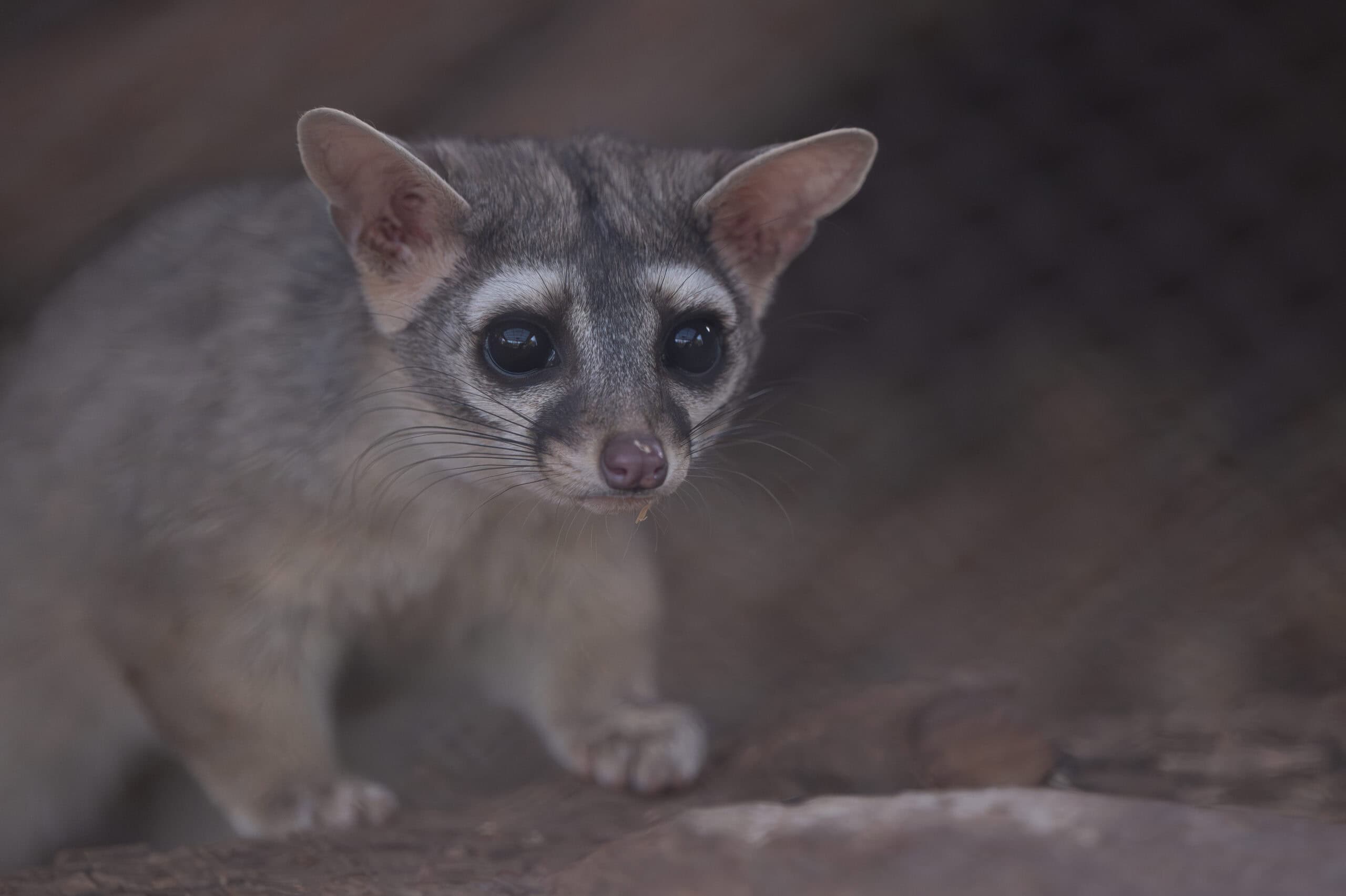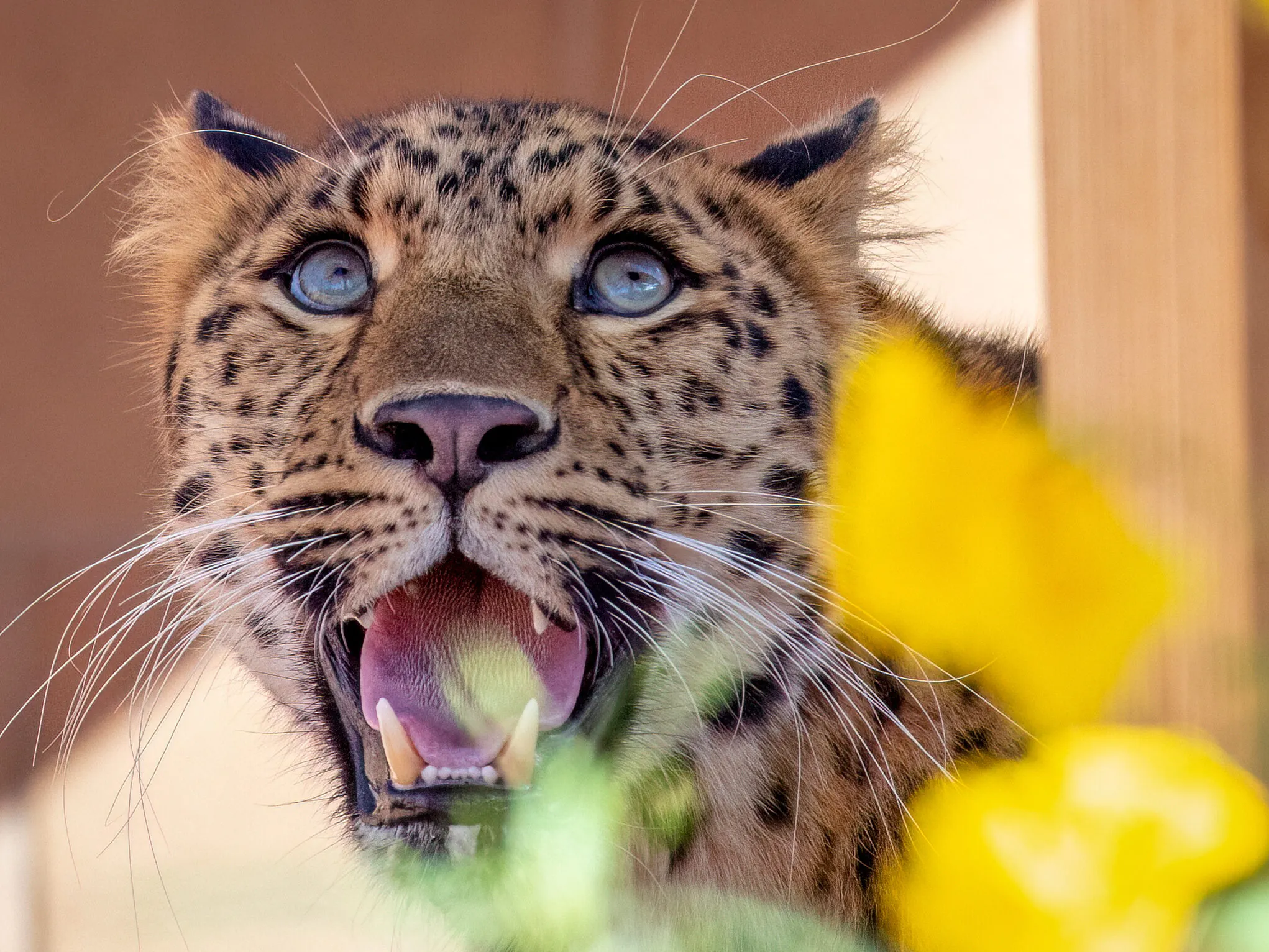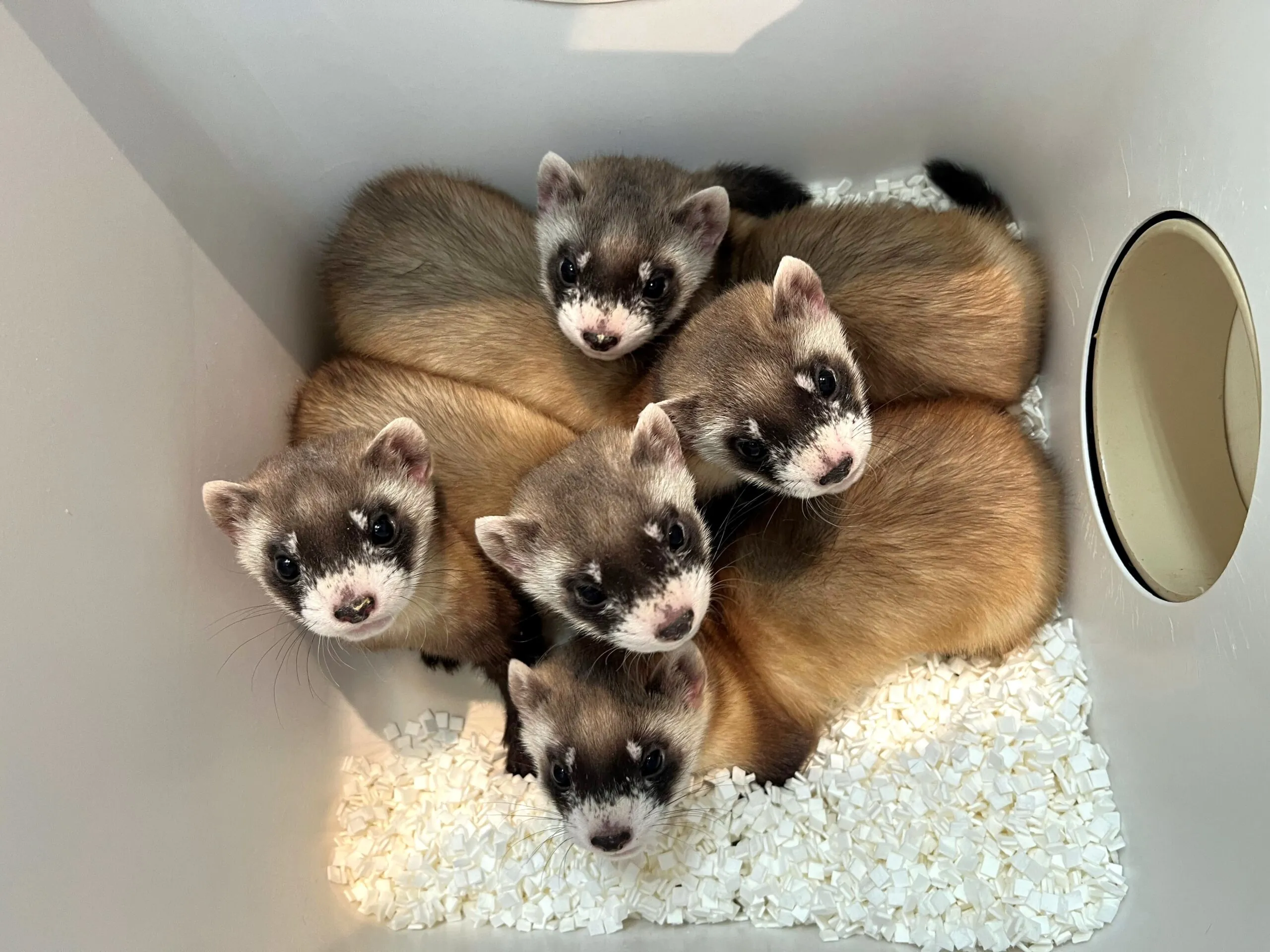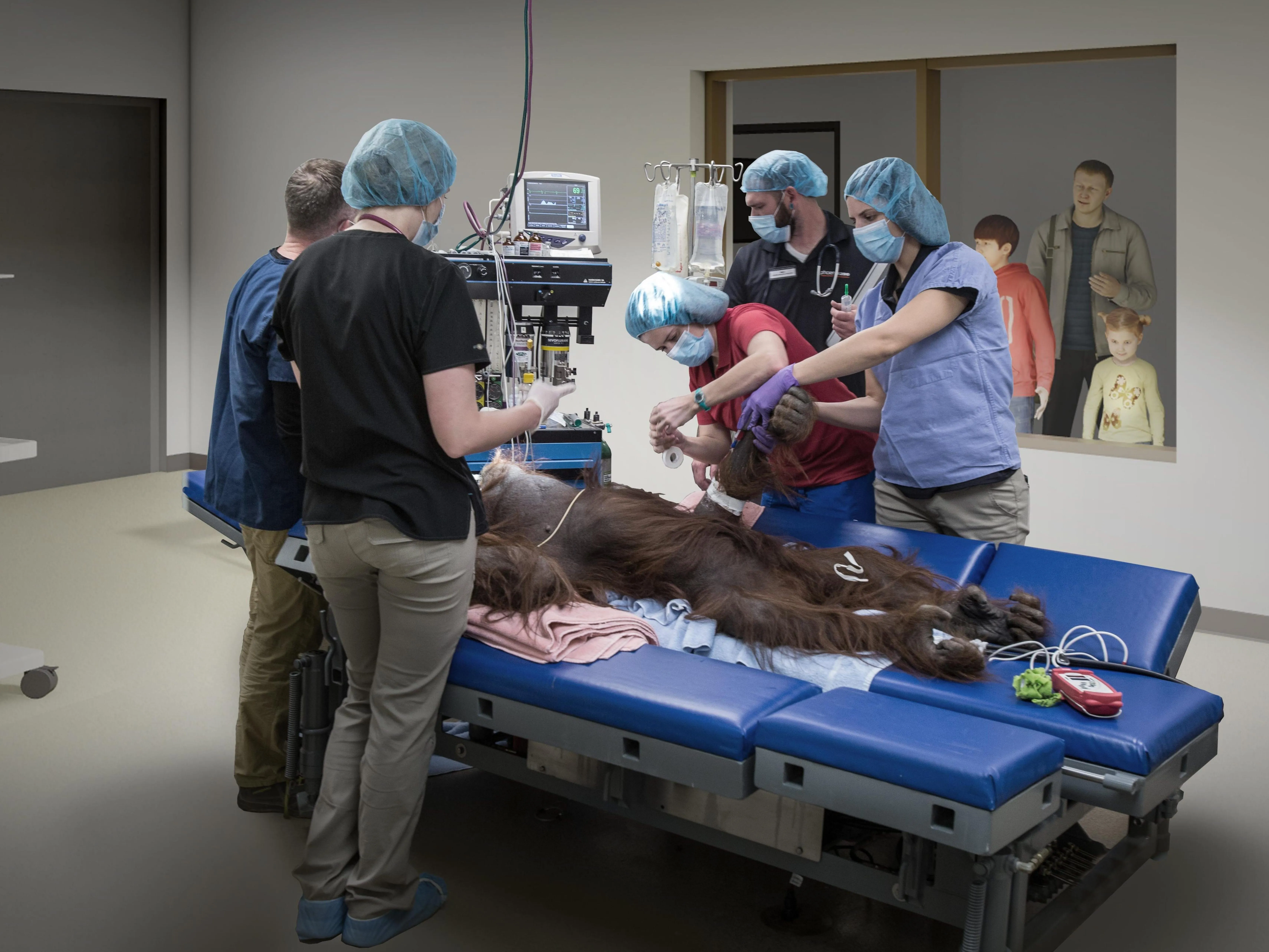Ringtail
Bassariscus astutus
I’m Not a Cat
Ringtails are often mistakenly called ringtail cats or miner’s cats. Like cats, they have a taste for mice and wood rats, and in the past were placed in mines and miner’s cabins for rodent control. But ringtails are actually members of the raccoon family, like coatis. Although much smaller than raccoons, ringtails also have long tails with alternating bands of white and black fur. Their tails help with camouflage and balance.
I’m a Rock Star
Ringtails typically live in rocky areas and make their dens in caves, rock crevices, abandoned mine shafts and even abandoned buildings if there is a water source nearby. They are well-suited for their homes, easily able to climb up and down vertical walls, cliffs, trees and even cacti, thanks to their semi-retractable claws and hind legs that can rotate 180 degrees.
I’m Hard to Find
Ringtails are nocturnal (active at night). They have excellent vision, and some think the white rings around their eyes reflect moonlight and starlight to help with night hunting. Although common in Arizona and throughout the Southwest and northern Mexico, they are secretive and rarely show themselves.

Diet: mammals, invertebrates, birds, reptiles, amphibians, plants
Zoo Diet: formulated feed, specialized carnivore diet, whole prey, fruits, veggies
Habitat: rocky areas, forests, deserts, canyons
Weight: 1.5 – 3 lbs


Plan your visit today!
The Phoenix Zoo is one of the largest non-profit zoos in the U.S., caring for over 3,000 animals, with nearly 400 species represented, including many threatened/endangered species.

Plan your visit today!
The Phoenix Zoo is one of the largest non-profit zoos in the U.S., caring for over 3,000 animals, with nearly 400 species represented, including many threatened/endangered species.








